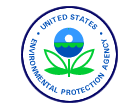Innovative
Technology Verification Report
Field Measurement
Technologies for
Total Petroleum Hydrocarbons in Soil
Dexsil®
Corporation
PetroFLAG™ System
This document is available in the Adobe Acrobat PDF Format.
Click here for information
about Portable Document File (PDF) Formats.
or
Click here
to directly download the Acrobat Reader.
(To view the PDF, it is recommended
that you use the latest Acrobat Reader)
Innovative
Technology Verification Report
Dexsil®
Corporation
PetroFLAG™ System
EPA 600/R-01/092
September 2001
The PetroFLAG™ System developed by Dexsil® Corporation (Dexsil)
was demonstrated under the
U.S. Environmental Protection Agency Superfund Innovative Technology Evaluation
Program in
June 2000 at the Navy Base Ventura County site in Port Hueneme, California.
The purpose of the
demonstration was to collect reliable performance and cost data for the
PetroFLAG™ System and
six other field measurement devices for total petroleum hydrocarbons (TPH)
in soil. In addition to
assessing ease of device operation, the key objectives of the demonstration
included determining the
(1) method detection limit, (2) accuracy and precision, (3) effects of
interferents and soil moisture
content on TPH measurement, (4) sample throughput, and (5) TPH measurement
costs for each
device. The demonstration involved analysis of both performance evaluation
(PE) samples and
environmental samples collected in four areas contaminated with gasoline,
diesel, or other petroleum
products. The performance and cost results for a given field measurement
device were compared to
those for an off-site laboratory reference method, “Test Methods
for Evaluating Solid Waste”
(SW-846) Method 8015B (modified). During the demonstration, Dexsil required
50 hours,
40 minutes, for TPH measurement of 181 samples and 10 extract duplicates.
The TPH measurement
costs for these samples were estimated to be $6,390 for the PetroFLAG™
System compared to
$38,560 for the reference method. The method detection limits were determined
to be 20 and
6.32 milligrams per kilogram for the PetroFLAG™ System and reference
method, respectively.
During the demonstration, the PetroFLAG™ System exhibited good precision
and ease of use. The
device’s mean responses for interferents that are considered to be
petroleum hydrocarbons were
mixed (0 and 42.5 percent for neat methyl-tert-butyl ether and Stoddard
solvent, respectively). The
device’s mean responses for interferents that are not considered
to be petroleum hydrocarbons were
also mixed (1.5, 103, and 16 percent for neat tetrachloroethene; turpentine;
and 1,2,4-
trichlorobenzene, respectively, and 2.5 percent for soil spiked with humic
acid). In addition, an
increase in soil moisture content biased the device’s TPH results
low for weathered gasoline soil PE
samples. Based on action level conclusions and statistical correlations,
the PetroFLAG™ System
TPH results compared well with those of the reference method; however,
the device exhibited a high
bias, and its TPH results were determined to be statistically different
from those of the reference
method. Collectively, the demonstration findings indicated that the user
should exercise caution
when considering the device for a specific field TPH measurement application.
Back
to SITE Reports
Posted December 03, 2001
Jesse Armstrong
Computer Sciences Corporation
|

